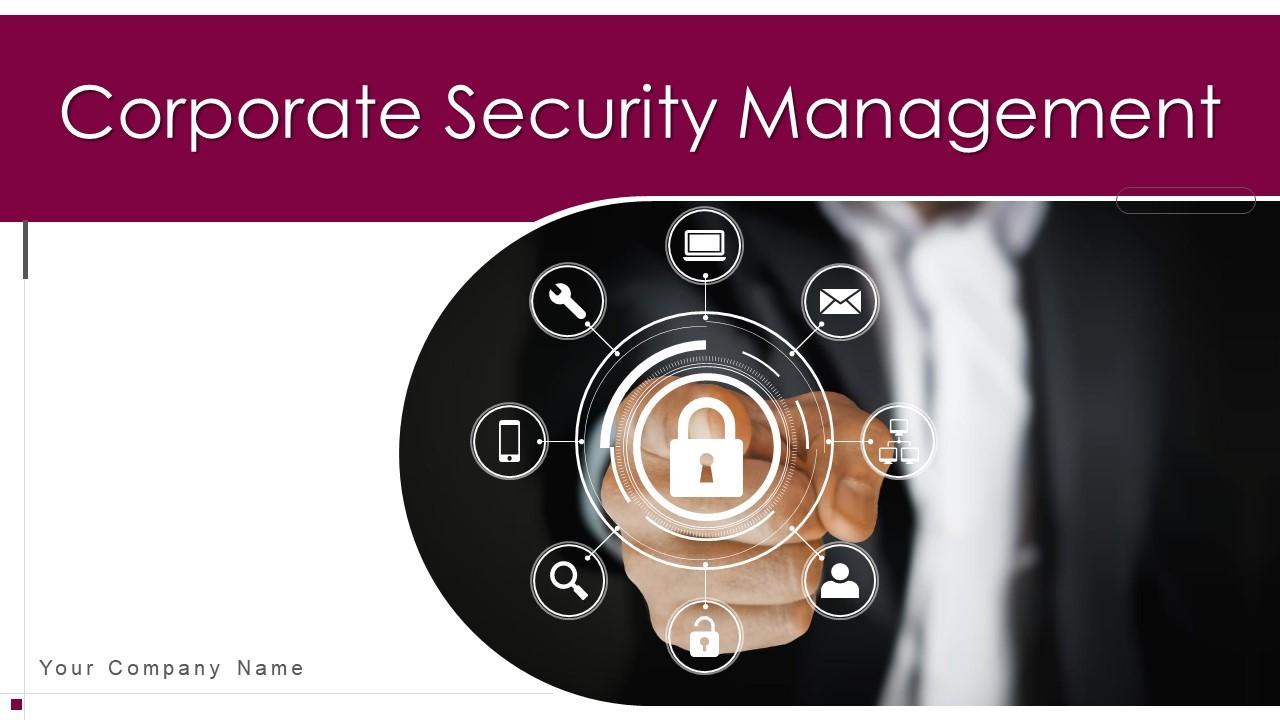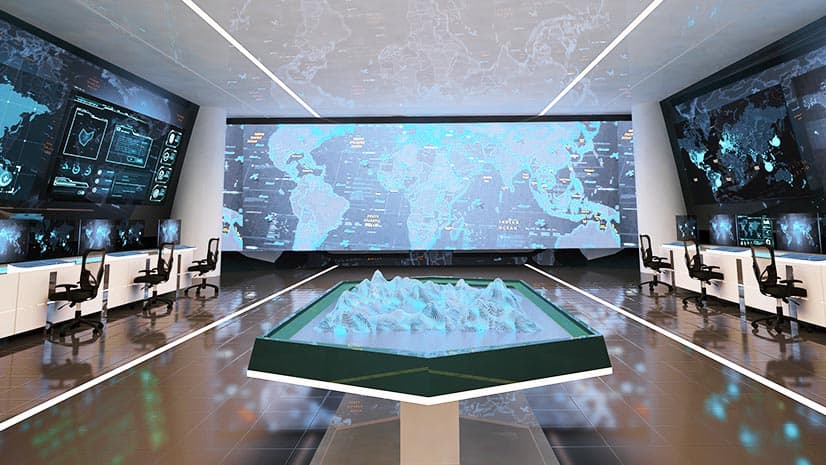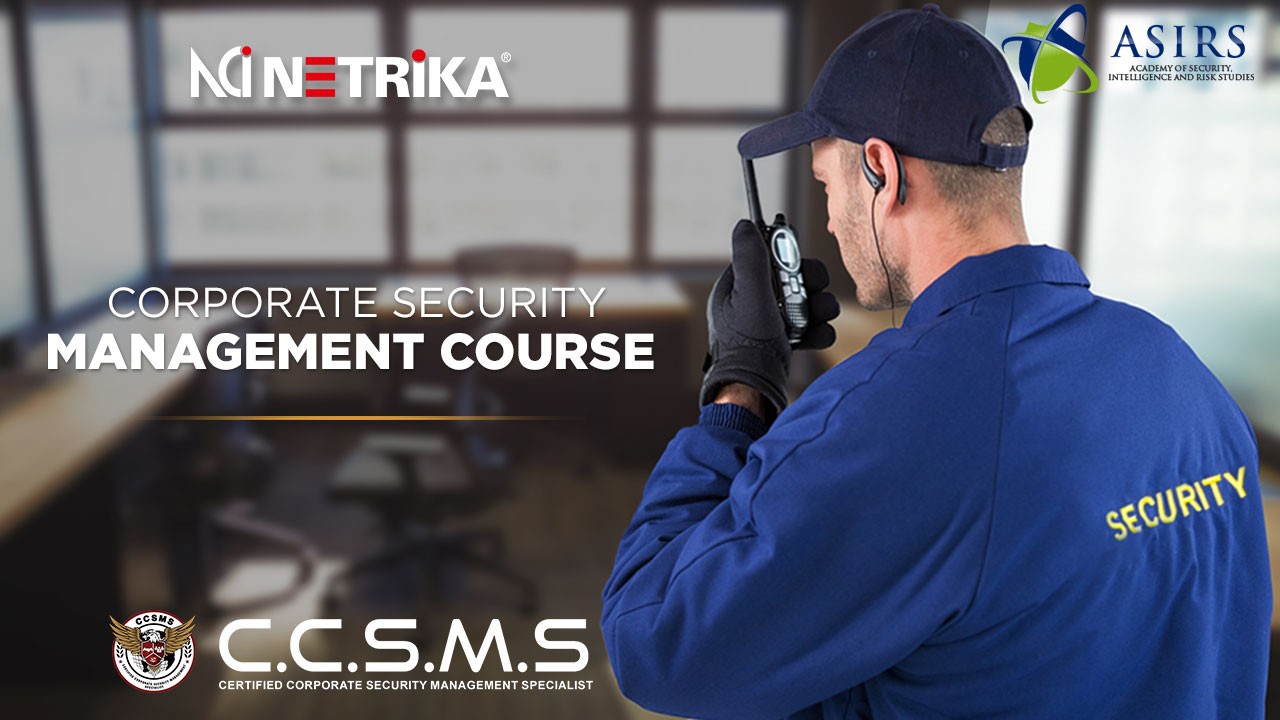A Plan for Corporate Security Quality: Securing Your Business
A Plan for Corporate Security Quality: Securing Your Business
Blog Article
From Cybersecurity to Physical Procedures: Strengthening Business Protection in a Transforming World
In today's rapidly developing digital landscape, the importance of corporate safety can not be overemphasized. As cyber risks become widespread and increasingly advanced, organizations need to surpass standard cybersecurity steps to secure their possessions and procedures - corporate security. This is where the combination of physical security procedures comes to be important. By combining the toughness of both cybersecurity and physical security, business can develop a detailed protection technique that resolves the diverse variety of threats they face. In this conversation, we will certainly check out the altering risk landscape, the requirement to integrate cybersecurity and physical security, the implementation of multi-factor verification steps, the significance of staff member understanding and training, and the adjustment of safety and security steps for remote labor forces. By examining these vital areas, we will get beneficial understandings into how organizations can enhance their business safety in an ever-changing globe.
Understanding the Changing Hazard Landscape
The evolving nature of the modern world demands a detailed understanding of the transforming threat landscape for reliable business security. It is important for organizations to remain notified and adapt their safety and security gauges to address these advancing dangers.
One key aspect of understanding the changing threat landscape is recognizing the different kinds of dangers that companies encounter. Cybercriminals are regularly creating new methods to exploit susceptabilities in computer system systems and networks. These dangers can range from malware and ransomware strikes to phishing scams and social design strategies. Furthermore, physical dangers such as theft, criminal damage, and business reconnaissance continue to be common concerns for companies.
Monitoring and assessing the hazard landscape is necessary in order to recognize prospective risks and vulnerabilities. This entails staying updated on the most up to date cybersecurity trends, assessing hazard knowledge reports, and conducting normal danger evaluations. By comprehending the changing danger landscape, companies can proactively execute suitable safety and security measures to minimize dangers and secure their properties, online reputation, and stakeholders.
Integrating Cybersecurity and Physical Security
Incorporating cybersecurity and physical safety is important for comprehensive company security in today's interconnected and digital landscape. As organizations significantly depend on technology and interconnected systems, the limits between physical and cyber hazards are becoming obscured. To effectively secure versus these risks, an all natural method that incorporates both cybersecurity and physical safety actions is essential.
Cybersecurity concentrates on protecting digital possessions, such as networks, data, and systems, from unapproved gain access to, disruption, and theft. Physical protection, on the various other hand, includes actions to secure physical possessions, people, and facilities from vulnerabilities and risks. By incorporating these two domains, companies can resolve vulnerabilities and hazards from both physical and digital angles, thereby enhancing their general protection stance.
The integration of these two techniques permits an extra extensive understanding of safety and security threats and makes it possible for a unified response to incidents. As an example, physical gain access to controls can be improved by integrating them with cybersecurity procedures, such as two-factor authentication or biometric identification. In a similar way, cybersecurity measures can be complemented by physical safety and security measures, such as surveillance cams, alarm systems, and safe access factors.

Carrying Out Multi-Factor Verification Measures
As organizations increasingly focus on thorough safety and security actions, one reliable method is the execution of multi-factor verification actions. Multi-factor verification (MFA) is a security technique that needs customers to give numerous kinds of recognition to access a system or application. This strategy includes an additional layer of defense by incorporating something the customer understands, such as a password, click reference with something they have, like a finger print or a safety and security token.
By executing MFA, organizations can significantly improve their safety pose - corporate security. Traditional password-based authentication has its limitations, as passwords can be easily endangered or forgotten. MFA reduces these dangers by adding an extra verification factor, making it much more hard for unapproved individuals to get accessibility to sensitive details
There are numerous kinds of multi-factor authentication techniques available, consisting of biometric authentication, SMS-based confirmation codes, and equipment symbols. Organizations require to analyze their details demands and select one of the most suitable MFA option for their requirements.
However, the application of MFA need to be meticulously intended and implemented. It is vital to strike a balance in between protection and use to stop customer stress and resistance. Organizations ought to additionally take into consideration possible compatibility issues and offer ample training and support to ensure a smooth transition.
Enhancing Staff Member Recognition and Training
To reinforce business safety and security, organizations should focus on enhancing worker understanding and training. In today's quickly progressing risk landscape, workers play a crucial function in guarding an organization's delicate details and possessions. Many protection breaches take place due to human error or lack of recognition. As a result, organizations require to buy detailed training programs to enlighten their workers about prospective threats and the most effective practices for mitigating them.
Reliable employee understanding and training programs need to cover a variety of topics, consisting of data protection, phishing attacks, social engineering, password hygiene, and physical safety measures. These programs ought to be tailored to the particular demands and obligations of various worker duties within the company. Regular training sessions, workshops, and simulations can help employees develop the necessary skills and understanding to react and recognize to security threats effectively.
Moreover, organizations need to motivate a culture of protection recognition and supply continuous updates and reminders to maintain employees informed concerning the most recent risks and mitigation methods. This can be done via interior interaction channels, such as e-newsletters, intranet portals, and e-mail campaigns. By fostering a security-conscious workforce, companies can dramatically minimize the possibility of protection events and shield their beneficial possessions from unauthorized gain access to or concession.

Adapting Protection Actions for Remote Labor Force
Adapting business protection measures to accommodate a remote workforce is important in making sure the defense of delicate details and assets (corporate security). With the boosting fad of remote job, companies must execute appropriate security steps to reduce the dangers linked with this brand-new means of functioning
One crucial aspect of adapting protection actions for remote job is developing safe and secure interaction networks. Encrypted messaging systems and digital exclusive networks (VPNs) can aid secure sensitive details and prevent unapproved accessibility. In addition, organizations ought to implement making use of strong passwords and multi-factor verification to enhance the security of remote accessibility.
An additional vital factor to consider is the implementation of secure remote accessibility options. This includes offering workers with protected access to company resources and data through digital desktop computer infrastructure (VDI), remote desktop computer procedures (RDP), or cloud-based services. These modern technologies guarantee that sensitive details continues to be protected while enabling staff members to execute their functions explanation efficiently.

Lastly, extensive safety and security recognition training is vital for remote employees. Educating sessions need to cover best methods for safely accessing and managing delicate information, identifying and reporting phishing attempts, and preserving the overall cybersecurity hygiene.
Conclusion
In final thought, as the threat landscape continues to develop, it is critical for companies to enhance their safety and security measures both in the cyber and physical domain names. Incorporating cybersecurity and physical safety, executing multi-factor authentication actions, and improving staff member understanding and training are crucial actions in the direction of accomplishing robust corporate security.
In this conversation, we will discover the changing threat landscape, the requirement to integrate cybersecurity and physical protection, the application of multi-factor verification actions, the value of employee recognition and training, and the adaptation of protection measures for remote workforces. Cybersecurity procedures can be complemented by physical safety measures, such as try this monitoring cams, alarms, and safe access points.
As companies progressively prioritize extensive protection steps, one reliable approach is the application of multi-factor authentication measures.In final thought, as the threat landscape proceeds to develop, it is important for companies to enhance their protection measures both in the cyber and physical domain names. Integrating cybersecurity and physical protection, carrying out multi-factor verification steps, and improving worker understanding and training are necessary actions in the direction of attaining durable corporate safety and security.
Report this page